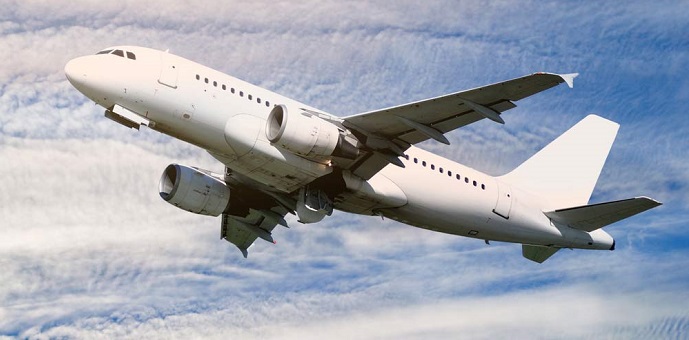The Short Answer is No! ….However there is more to this story – Read on !
Sofema Aviation Services www.sassofia.com Looks at some of the specific elements related to UAE GCAA, FAA & EASA Compliant SMS
Whether we are talking about UAE GCAA, FAA or EASA as the “regulatory environment” the focus remains on demonstrating that the organisation has an SMS which essentially shows compliance with ICAO Annex 19.
However, if we go a little deeper we will see that there are some differences on the Maintenance side of the SMS story (Not differences in what SMS looks like – but differences in the visibility of the regulations which drive SMS)
Commercial Air Transport {CAT) Operators SMS
When we look at the small print we will see that whilst SMS is clearly defined for operators (GCAA Air Operators -FAA Air Carrier Part 121 & EASA Air Operators Certificate holder – Air Carrier) It is not the same story when we look at SMS for Part 145 Organisations.
Maintenance Repair Organisations (MRO) – EASA 145 Organisations
Whilst the GCAA advocates SMS in Civil Aviation Regulation (CAR) X (Roman Numeral 10) FAA advocates Safety Management System Voluntary Implementation of SMS for Non-Part 121 Operators, MROs, and Training Organizations, EASA has not currently issued any formal guidance.
(EASA did issue NPA 2013-01 in January 2013 however it has not moved any further in 5 years which is clearly an issue)
What Does EASA Say for Operations SMS?
EASA has embedded compliance with ICAO Annex 19 within EASA OPS Regulation 965/2012
What Does the FAA Say for SMS?
FAA Order 8000.3698 – (This is the highest level document ) This order establishes the Safety Management System (SMS) policy for the Federal Aviation Administration (FAA) and requirements for FAA organizations incorporating SMS and/or International Civil Aviation Organization (ICAO) State Safety Program (SSP) frameworks to form the overall FAA SMS.
Specifically, this order:
a. Furthers safety management by evolving to a more process-oriented system safety approach with an emphasis on Safety Risk Management (SRM) and Safety Assurance.
b. Sets forth basic management principles to guide the FAA in safety management and safety oversight activities.
c. Requires adopting a common approach to implementing and maturing an integrated SMS, including fostering a positive safety culture and other attributes as applicable.
FAA Requirements for PART 121 Air Carriers
120-92B – Safety Management Systems for Aviation Service Providers – January 08, 2015
This advisory circular (AC) provides information for Title 14 of the Code of Federal Regulations (14 CFR) part 121 air carriers that are required to implement Safety Management Systems (SMS) based on 14 CFR part 5. Specifically, this document provides a description of regulatory requirements, guidance, and methods of developing and implementing an SMS. This AC may also be used by other aviation service providers interested in voluntarily developing an SMS based on the requirements in part 5.
Considerations related to SMS in an FAA MRO Environment
Safety Management System – Voluntary Implementation of SMS for Non-Part 121 Operators, MROs, and Training Organizations
SMS development for Non-121 Air Operators, MROs and Training Organizations can be furthered by using some core documents and tools. The list (and links) below highlight the base documents, as well as other helpful material and resources.
SMS includes the four Components and 12 Elements, with respective processes. The guidance material and tools highlight functional requirements, design expectations and performance objectives.
AC 120-92B – Safety Management Systems for Aviation Service Providers
Tools specific to Air Operators, MROs, and Training Organizations developing an SMS
SMS Voluntary Program Gap Analysis Tool (MRO) (MS Excel) This tool can be used for assessing a Maintenance Repair Organization with respect to SMS requirements of the SMS Voluntary Program Standard.
What Are the SMS Key Processes?
Regardless of the Regulatory Environment the following elements will all feature in an effective SMS
a) Hazard Identification
A method for identifying hazards related to your organization;
b) Occurrence Reporting (Mandatory and Voluntary)
A process for the acquisition of data which is related to potential exposure;
c) Risk Management
A Documented Organisational Approach for the assessment of risk and exposure and for the development of appropriate mitigations (risk controls);
d) Performance Measurement
A mechanism to analyse whether the organization’s safety goals are being achieved; and Quality/Safety Assurance – processes based on quality management principles that support continuous improvement of the organization’s safety performance.
Considerations Related to SMS Compliance within an FAA Environment:
a) There is currently no mandatory requirement to include SMS within FAA Part 145 & Part 43
b) FAA Order 8000.3698 is a high level document placing the burden of responsibility on the FAA to comply with ICAO Annex 19 regarding wide scale industry implementation of SMS
c) SMS for US Air Carries is found in FAA Requirements for PART 121 Air Carriers AC 120-92B – Safety Management Systems for Aviation Service Providers – January 08, 2015
d) The FAA promotes voluntary adoption of SMS Safety Management System – for Non-Part 121 Operators, MROs, and Training Organizations again using AC 120-92B as the route for compliance (Same Document as for Part 121 Air Carriers)
e) Implementation of SMS presents the organisation with significant challenges and it is not simply a “bolt on to an existing training and much depends on the current status of the SMS within the organisation and how far on the SMS Journey the organisation has traveled)
f) The FAA provides an assessment tool for MRO organisations – please see here
g) Sofema Aviation Services offers almost 50 different courses related to aspects of SMS ranging from 1 to 5 Days depending on Roles and objectives – please see here
For further questions please see www.sassofia.com or email office@sassofia.com




